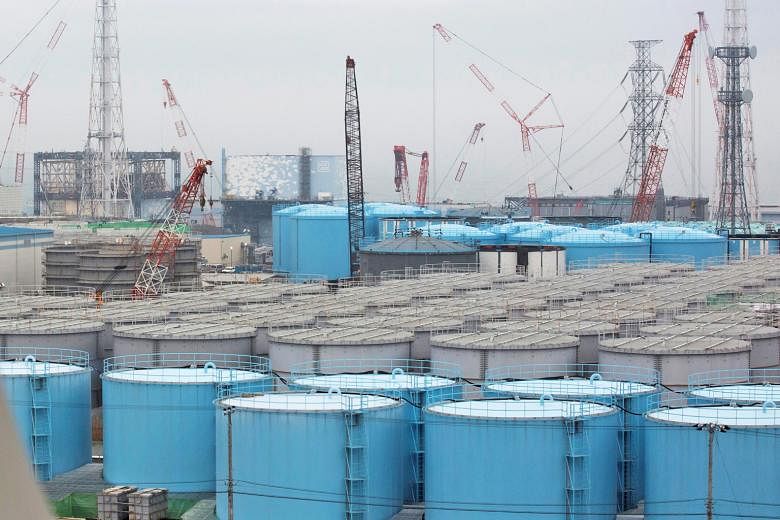TOKYO • The owner of the Fukushima nuclear plant, destroyed by an earthquake and tsunami more than seven years ago, said water treated at the site still contains radioactive materials that for years it has insisted had been removed.
The admission by Tokyo Electric Power Company (Tepco) could ruin its chances of releasing the water into the ocean, a move the nuclear regulator says is safe but which local fishermen oppose.
Tokyo won the bid to host the 2020 Summer Olympics more than five years ago, with Prime Minister Shinzo Abe declaring that Fukushima was "under control".
The nearly one million tonnes of stored water at the wrecked plant, enough to fill about 500 Olympic swimming pools, still contained detectable levels of potentially harmful radioactive particles, Tepco told a government committee last Monday.
Tepco apologised to the committee under the Ministry of Economy, Trade and Industry, which is looking into ways to dispose of the water. A spokesman for Tepco confirmed the findings and the apology.
A 9.0-magnitude quake and tsunami in March 2011 triggered meltdowns at three of the Fukushima Daiichi plant's six reactors, spewing radiation into the air, soil and ocean and forcing 160,000 residents to flee.
It was the world's worst nuclear disaster since Chernobyl 25 years earlier.
-
84%
-
Proportion of the 890,000 tonnes of water held at Fukushima that contains higher concentrations of radioactive materials than legal limits allow.
Hundreds of deaths have been attributed to the chaos of evacuations during the crisis and to the trauma that refugees have experienced since then. But the government only last month acknowledged that one worker at the plant had died from radiation exposure.
Documents on the government committee's website show that of 890,000 tonnes of water held at Fukushima, 750,000 tonnes, or 84 per cent, contain higher concentrations of radioactive materials than legal limits allow.
In 65,000 tonnes of treated water, the levels of radioactive materials are more than 100 times government safety levels.
Radioactive readings of one of those isotopes, strontium-90, considered dangerous to human health, were detected at 600,000 becquerels per litre in some tanks, 20,000 times the legal limit.
Tepco has for years insisted that its purification processes remove strontium and 61 other radioactive elements from the contaminated water but leaves tritium, a mildly radioactive element that is difficult to separate from water.
Tritium is regularly released after dilution in normally operating nuclear plants.
"We will filter the water in the tanks one more time to bring the levels to below regulatory limits before release into the ocean if a decision is made to do so," the Tepco spokesman said.
REUTERS

